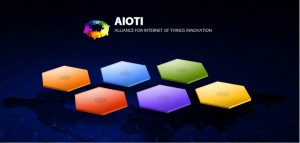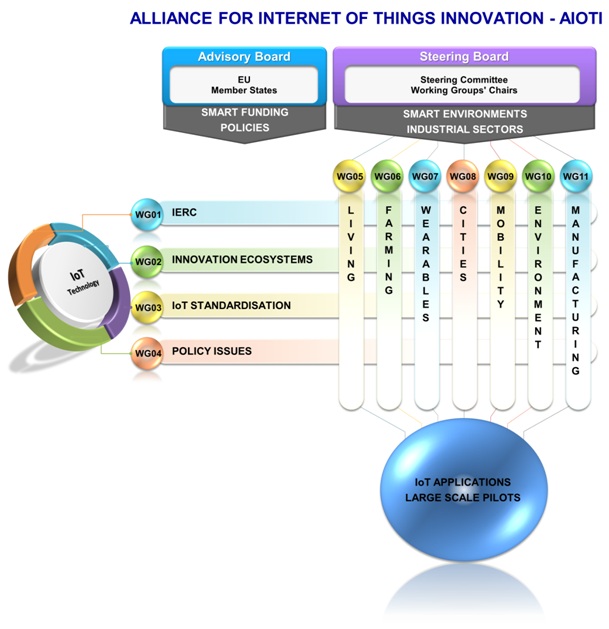ALLIANCE OF INTERNET OF THINGS FOR INNOVATION – A EUROPEAN INITIATIVE
April 21, 2015
 During the SIdO plenary session – a new professional event dedicated to the Internet of Things (IoT) held in Lyon, France from April 7-8 – Mr. Mario Campolargo (Director, Net Futures – DG CONNECT, European Commission) insisted on the importance of the launch of the new Alliance Internet of Things for Innovation (AIOTI) two weeks ago, and announced that IoT will be a major focus for European Commission during 2016-2017.
During the SIdO plenary session – a new professional event dedicated to the Internet of Things (IoT) held in Lyon, France from April 7-8 – Mr. Mario Campolargo (Director, Net Futures – DG CONNECT, European Commission) insisted on the importance of the launch of the new Alliance Internet of Things for Innovation (AIOTI) two weeks ago, and announced that IoT will be a major focus for European Commission during 2016-2017.
The European Commission is, currently, supporting the development (in Europe) of the most dynamic and agile IoT ecosystem and industry in the world, which could really transform people’s lives, drive growth, create employment and address societal challenges. According to estimates, nearly five billion things will be connected by 2015, reaching 25 billion by 2020, helping users save energy, reduce traffic jams, increase comfort, and get better healthcare and increased independence. IoT will not only allow companies to change their traditional business models through new services, but will also help combine the benefits of selling products with value-added digital service.more–>
Revenues in the EU from IoT are estimated to represent €400 million in 2015 and is expected to increase to more than one trillion euros in 2020.
The newly created Alliance for Internet of Things Innovation brings together:
- Different industries: nanoelectronics/semiconductor companies, Telecom companies, Network operators, Platform Providers (IoT/Cloud), Security, Service providers
- Different sectors: energy, utilities, automotive, mobility, lighting, buildings, manufacturing, healthcare, supply chains, cities, etc.
AIOTI has already involved some of Europe’s largest tech and digital companies in this initiative: Alcatel, Bosch, Cisco, Hildebrand, IBM, Intel, Landis+Gyr, Nokia, ON Semiconductor, Orange, OSRAM, Philips, Samsung, Schneider Electric, Siemens, NXP Semiconductors, STMicroelectronics, Telecom Italia, Telefonica, Telit, Thales, Vodafone, Volvo, and start-ups such as SIGFOX
AIOTI is organized as a lean structure with two layers: the Board (Steering Committee) and the Working Groups (WGs). The chairs of the WGs will be the members of the Board, thus any AIOTI member that would like to be part of the Board must also chair a WG. As AIOTI membership is not granted ad-personam, members may propose different representatives for the role within the Board and the respective working group.
The eleven WGs are structured as below, corresponding to current prominent areas of Internet of Things:
- WG 1: IoT European Research Cluster
- WG 2: Innovation Ecosystems
- WG 3: IoT Standardisation
- WG 4: Policy issues (trust, security, liability, privacy)
- WG 5: Smart living environments for ageing well (e.g. smart house)
- WG 6: Smart farming and food security
- WG 7: Wearables
- WG 8: Smart cities
- WG 9: Smart mobility (smart transport/smart vehicles/connected cars)
- WG 10: Smart environment (smart water management)
- WG 11: Smart manufacturing

The current priority for the EC is to extend AIOTI memberships, not only to involve major IoT players, but also innovative SMEs, startups, or any entity that has a legitimate interest in joining this Alliance. The European Commission launched a call for expression of interest to join the Alliance for Internet of Things Innovation.
Europe’s goal is to be able to compete with USA or Japan, and make experimentation at a larger scale than today. The Commission published recently a €51 million call for IoT projects: The initiative cuts across several technological areas such as smart systems integration, cyber-physical systems, smart networks, and Big Data; and targets SME and IoT innovators to create an open IoT environment.

 English | EN
English | EN 